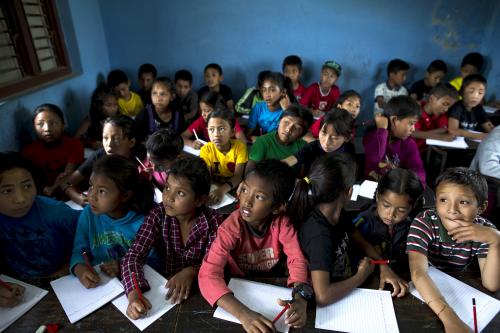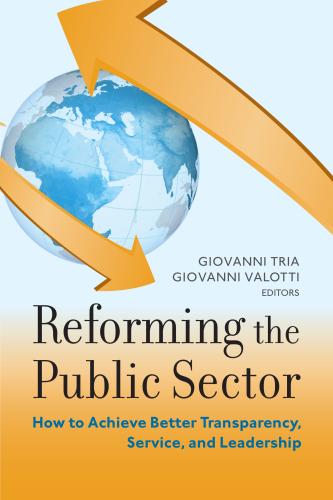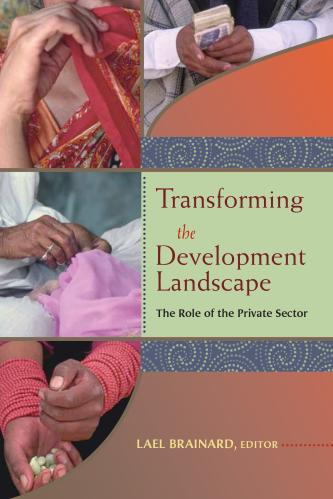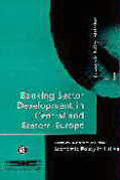What are the key obstacles in financing education? Who should be held accountable for ensuring that children receive a good quality education? These questions are at the heart of the debate going on in the post-2015 development agenda’s Global Consultation on Education, which is wrapping up this week. With a massive financing gap of $16 billion per year needed to achieve education for all by 2015, it is clear that more funding is needed. But increased financing is only one part of the equation: more effective and equitable aid is the other. Ensuring more effective aid isn’t a question of a public or private financing, but of working smarter and more collaboratively to bring the lessons of what works and what doesn’t in both the public and private systems to the poorest of the poor, to places where neither government nor market approaches on their own are solving the education crisis.
Private Sector Involvement in the Post-2015 Education Agenda
The private sector should be part of the solution to development and education challenges, and is increasingly operating as such. Previously, the private sector too often sat outside of development policy processes. Now the U.N. secretary general’s Education First initiative and High Level Panel on the post-2015 development agenda are helping to change these out-dated dynamics.
The Global Education First Initiative, U.N. Secretary General Ban-Ki Moon’s five-year education initiative aimed at giving a “big push” to the global movement for education by 2015 and beyond, is forging a broad coalition for change across donors, governments, the private sector and civil society. The secretary general has deliberately included business leaders in his High Level Panel to advance the development framework beyond 2015, including Betty Maina, the chief executive of Kenya’s Association of Manufacturers, and Paul Polman, the chief executive officer of Unilever, a member of the International Business Council of the World Economic Forum and the World Business Council for Sustainable Development. In addition, the High Level Panel has sought private sector input throughout its process. Never before has the door been so wide open to businesses wanting to help shape the development debate, and never before have so many companies gotten engaged.
The business case for corporate engagement is compelling: a well-educated and skilled workforce is crucial to corporate competitiveness and to national growth, particularly in our knowledge-based, globalized 21st-century economy. Private sector involvement within the education sector has until now largely taken place under the banner of corporate social responsibility, with activities among companies often fragmented. In order to create change, Sarah Brown is chairing the Global Business Coalition for Education, which provides a coordinating mechanism for corporate efforts to deliver on the promise of quality education for all of the world’s children. The initiative brings together corporate leaders around a set of education priorities and enables them to identify opportunities for collaboration, advocate collectively, and, where possible, pool resources for greater scale and impact. While more still needs to be done, including getting more companies involved, the seeds have been sown.
More Effective and Equitable Financing
More financing is crucial, but as we have learned from the health sector, the education sector must ensure that the focus on mobilizing funding does not come at the expense of a productive discussion about how to ensure funding is spent efficiently and that delivery mechanisms are cost effective.
One enormous challenge for financing education is equity: public spending often reinforces disadvantage, with the most prosperous regions and best performing schools cornering the lion’s share of the education budget. As recently highlighted by Kevin Watkins, we must move away from the current “equal finance for each pupil” model and toward “an equal chance for every child” approach. Both public and private spending must play a greater role in mitigating disadvantage.
Corporate stakeholders can help to overcome obstacles in education through support for innovative programs and data-driven policies, for instance through participation in global initiatives such as the Global Partnership for Education (GPE). Forty-six countries to date have been approved for GPE program implementation grants with a combined value of $2.76 billion dollars. Additionally the number of countries and the value of approvals are expected to significantly increase in 2013. GPE has a seat on its board for the private sector/private foundation constituency; both Pearson and the Children’s Investment Fund Foundation represent the private sector through this mechanism. In this capacity, these private sector actors are encouraging alignment across many actors and education initiatives, and are working to identify opportunities for private sector stakeholders to become more engaged in shaping and supporting national education plans in support of GPE priorities. Companies like Microsoft and Intel, and foundations including the Hewlett Foundation, Open Society Foundation and Firelight Foundation, are some of the other private sector actors involved.
Private companies are developing innovative financing strategies, including investments that are targeted to promote equitable learning in developing countries. For instance, investment in private companies that are committed to original approaches and learning outcomes for economically disadvantaged children brings new capital into the education sector. The Pearson Affordable Learning Fund, launched in 2012 with $15 million of initial capital, provides an example of private sector investment to promote greater opportunity along these lines.
Supporting Innovative Models
Private sector engagement in education is as much about innovation in delivery models as it is about mobilizing resources. A core strength of the private sector is its ability to finance innovation, testing the viability of new approaches and models, and taking them to scale without long bureaucratic delays. Indeed, the private sector can take risks that governments and other actors cannot afford to make and be more nimble in choosing and making investments. In this spirit of innovation, U.N. Special Envoy Gordon Brown, the Global Business Coalition for Education and Laurene Powell Jobs hosted a summit on the role of technology in education on January 31st at the Twitter offices in Silicon Valley. The summit focused on three themes: how technology can be a substitute for bad or nonexisting education, how technology can be used to enable the system to do things more effectively, and how technology can be used to better meet learning needs through customized learning. Outcomes of the meeting included two public-private partnerships that seek to harness private sector innovation for the good of public education: 1.) UNICEF’s Office for Innovation is organizing innovation labs with tech companies in several country offices in advance of a follow-up meeting in 2014; and 2.) the idea of a new Global Literacy X Prize for the group that brings 200 illiterate kids to literacy in the fastest, most scalable way possible.
Data-Driven and Outcomes-Focused
Good data is crucial to business success and to improving the state of education around the world. The private sector can play a role in commissioning and gathering vital education data needed to shape programs and policies. Pearson’s partnership with the Economist Intelligence Unit is one example of this. The two launched the Learning Curve in 2012, a large open resource of educational data. The data in the Learning Curve, drawn from sources including the OECD, UNESCO and national statistics from 50 countries, shows a clear lack of correlation between public spending on education and the outcomes that countries achieve for their students. Data from partnerships such as these can show us that as important as increasing financing for education is, creating incentives, measuring learning outcomes and prioritizing open transparent accountability (for governments, districts, schools and even individual teachers) may be equally important.
Another effort currently underway to improve data and measurement of learning outcomes is the Learning Metrics Task Force, which represents a collaborative effort to build consensus around a set of learning goals that can be measured and achieved globally, and which can inform the post-2015 process. This work is in response to the realization that the focus on access to education in the Millennium Development Goals (MDGs) was at a cost to the quality of education and that there is too little accountability for learning outcomes once children go to school. The Task Force is co-chaired by a private sector representative, Sir Michael Barber of Pearson, a U.N. representative, Geeta Rao Gupta of UNICEF and a civil society representative, Rukmini Banerjee of Pratham.
The current post-2015 development agenda debate provides an opportunity for education stakeholders to rectify this oversight and inject learning into the agenda. A development goal with specific targets around learning would help to hold governments accountable for not only attendance numbers, but also for the performance of their schools and students over time. It could result in more effective education plans and systems that better enable teachers, students and parents to overcome the challenges and harness the opportunities of the 21st century. Indeed, the Learning Metrics Task Force’s meeting taking place this week in Dubai will aim to formulate meaningful and useable metrics that will not overburden governments already struggling to implement their national education plans with extremely limited resources.
The debate on financing within the post-2015 agenda provides the education community with an opportunity to identify good practices for equitable financing of innovative programs and policies that can help to tear down the existing inequalities in education and throughout societies. These preceding examples are just the tip of the iceberg as to how the private sector can be a powerful partner in achieving a learning agenda and how its investments can serve as a model for similar initiatives in other parts of the world.










Commentary
Improving Education Governance and Financing: A Bigger Role for the Private Sector
February 20, 2013